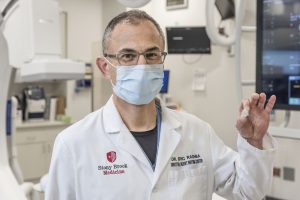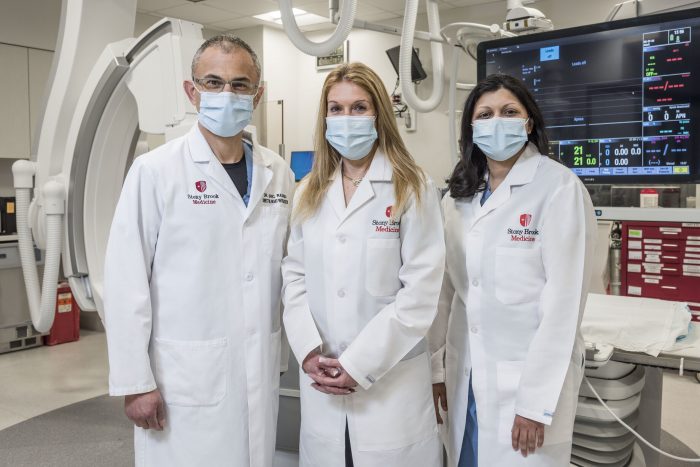Stony Brook University Heart Institute is now offering its patients the latest generation of the Watchman FLX™ device, which provides protection from strokes for people who have atrial fibrillation (AFib), a type of arrhythmia or irregular heartbeat, that is not caused by a heart valve problem.

Stony Brook is one of a select number of sites in New York State to offer the new Watchman FLX device. The procedure, which closes off the part of the heart where 90% of stroke-causing clots come from, will be done in Stony Brook University Hospital’s new Advanced Multifunctional Cath/EP Lab. The large, 845-square-foot multi-functional laboratory has been carefully designed and outfitted with state-of-the-art technology to allow the Heart Institute physicians to perform a full range of procedures.
People with AFib, the most common type of heart rhythm disorder, have an increased risk of stroke by 5 times on average. Blood thinners are often prescribed to help prevent strokes but “some experience bleeding problems or have other reasons why blood thinners aren’t the best option,” explains Eric Rashba, MD, Director, Heart Rhythm Center at Stony Brook Heart Institute.
The Watchman device, which is about the size of a quarter, provides an alternative to the lifelong use of blood thinners (anticoagulants) for people with AFib by blocking blood clots from leaving the heart and possibly causing a stroke.
The design of the newer, Watchman FLX device used by the Heart Institute offers significant advantages to the patient, including:
-
Advanced safety due to the new framing of the device that allows for more long-term stability and a more complete seal
-
Enhanced procedural performance that allows the physician to better maneuver and position the device during the procedure
-
A broader size range to permit treatment of a wider range of patient anatomies
“At the Stony Brook Heart Rhythm Center, in the hands of our expert team, we are excited to bring this latest innovation to effectively provide protection equivalent to anticoagulants for preventing strokes and avoiding the risk of serious bleeding,” said Dr. Rashba. “It has saved lives and improved my patients’ quality of life.”





